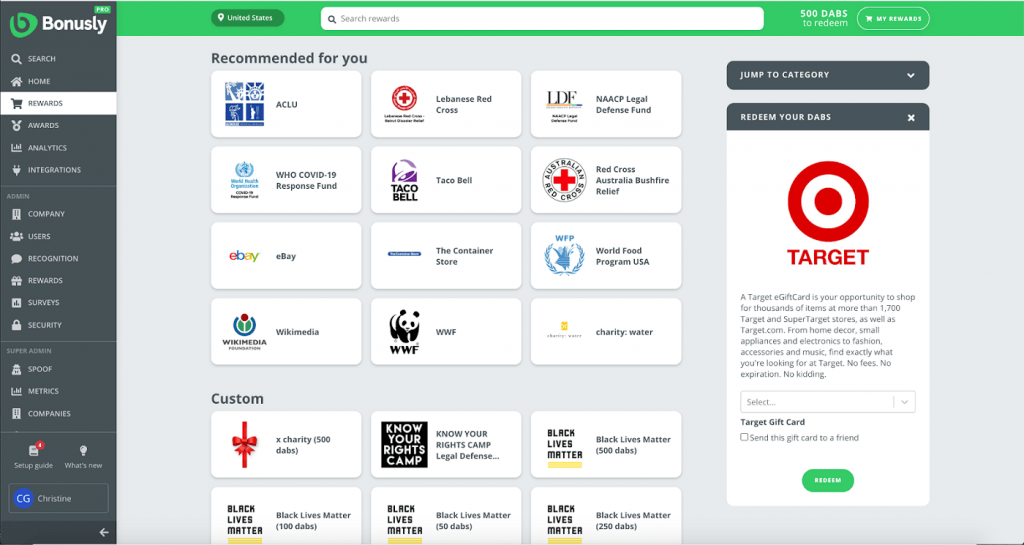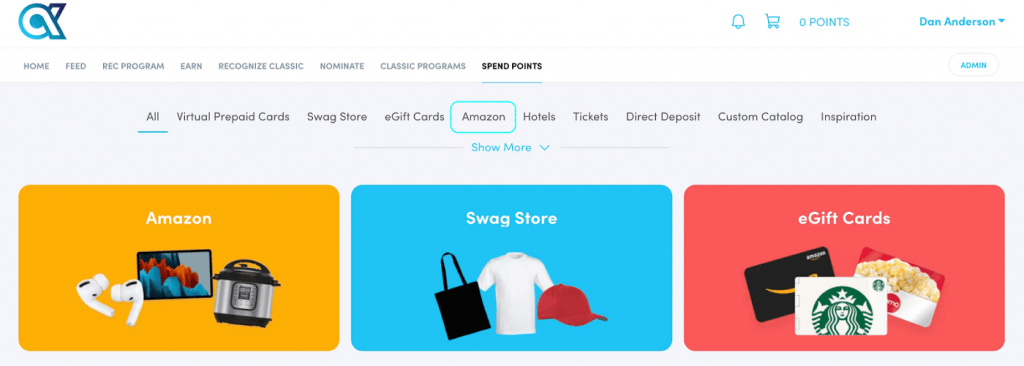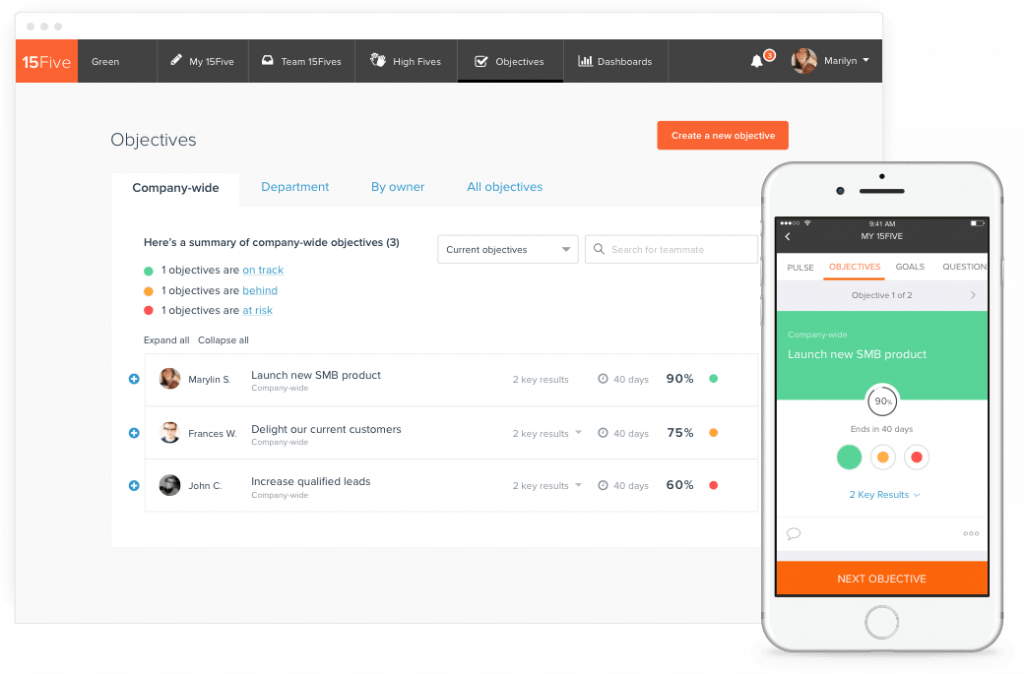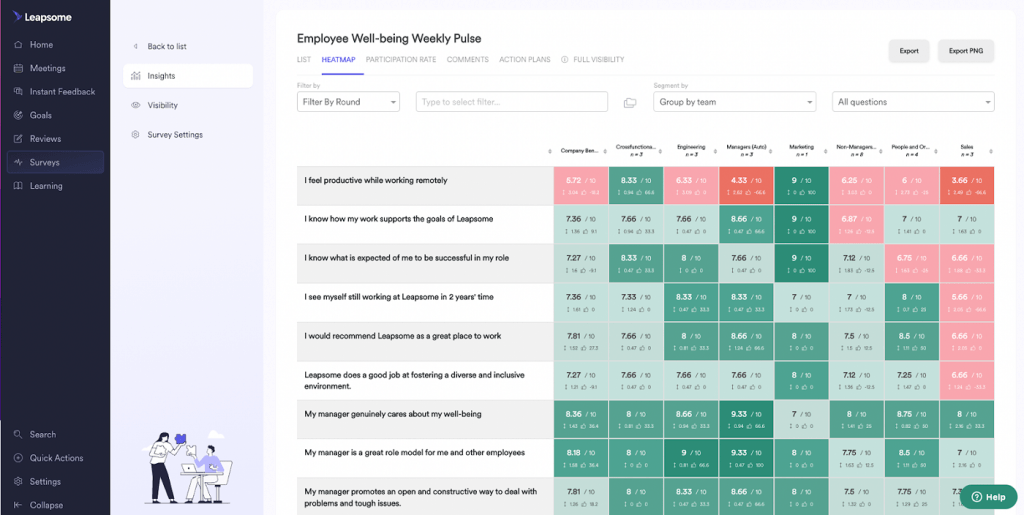Key takeaways
In this article…
What is an employee workplace rewards program?
A workplace rewards program recognizes employees and teams that have made significant accomplishments or contributions toward company goals. This recognition can take many forms, whether that’s praise from a supervisor, tangible rewards, or even a year-end bonus.
When done right, an employee workplace rewards program supports a performance-based culture where employees are celebrated for the quality of their work. An effective program has a positive impact on employee engagement, turnover, and productivity metrics.
However, it’s important to realize that employee workplace rewards programs are a complement to — not a replacement for — a robust compensation strategy. Giving a hard-working employee some company swag is no substitute for a hard-earned raise or promotion. If improving employee retention is your primary motivation for implementing a rewards program, back up and start by making sure employees are being compensated appropriately first.
Types of employee workplace rewards
Social recognition, monetary rewards, tangible rewards, and experiential rewards are some of the most common types of employee workplace rewards.
Social recognition
Though they are intangible, public messages of praise and gratitude go a long way toward making an employee feel valued. This social recognition can come from many different sources, including peers, supervisors, direct reports, and even company executives.
With platforms like Motivosity, employees can send values-oriented appreciation notes publicly or privately — an important option for those who aren’t as comfortable in the spotlight. Managers and business leaders can also create formal awards to recognize major accomplishments and milestones.
Monetary rewards
Monetary or financial rewards are some of the most common types of employee workplace rewards. They typically take the form of a salary increase or one-time bonus that are tied to particular milestones, goals, or achievements.
However, the monetary rewards can also take other forms, such as gift cards and stock options. Bonusly is one platform that allows employees to choose the monetary reward that’s most valuable to them.

Tangible, non-monetary rewards
Tangible employee rewards often come in the form of company swag. Branded pens, mugs, t-shirts and other merch items are usually easy to order and budget-friendly, but they tend to lack a personal touch and require physical storage space.
Some rewards platforms, like Awardco, let users pick items from Amazon and other retailers. This flexibility often reduces waste and improves employee satisfaction.

Experiential rewards
Most employees are happy to receive a bonus check or physical gift, but experiential rewards are often the most cost-effective and engaging form of appreciation. In fact, a 2023 study by Blueboard found that experiential rewards have 38% more positive impact on employee experience than gift cards, cash bonuses, extended PTO, food, and physical gifts.
For teams and departments, an experiential reward might be a team outing or office party. For individual employees, though, bucket lists and curated hands-on activities are effective ways of delivering experiential rewards.
How to create an employee workplace rewards program
Want to create an employee workplace rewards program, but not sure how to get started? Here are the steps that you should follow to create an employee workplace rewards program:
Decide on your goals for an employee workplace rewards program
First, you need to decide on your goals for your employee workplace rewards program. There are many possible reasons why your company might want to implement a rewards program — you might want to improve employee morale, create a more positive company culture, reduce turnover, or all of the above. Pinpointing your exact motivations will help you to set up an effective program.
Select reward criteria and frequency
There are many positive behaviors that are worth rewarding, and the most effective rewards programs recognize a healthy mix.
Some rewards may be performance-oriented, such as finishing a project before the deadline or fixing a critical issue. Other behaviors that are more oriented towards teamwork and company culture, like volunteering to help a coworker or reaching a milestone employment anniversary, are worth rewarding too.
You should also consider how often different types of rewards are given. Peer recognition is most effective when it can be given spontaneously, but top-down, company-wide recognition and high dollar rewards are more impactful when they are awarded less frequently.
Establish KPIs to track performance
If you want to give out performance-based rewards, establishing key performance indicators (KPIs) is essential. KPIs allow you to objectively track performance and make objective comparisons between individuals or teams. They are especially important for determining monetary rewards such as bonuses and merit salary increases.
Appropriate KPIs vary from business to business and team to team. For example, you might want to track the total number of tickets your customer service reps close, but it would make more sense to track deal closure rates for sales employees.
Performance management software such as Leapsome and 15Five makes it easy to set and track these KPIs for each employee across the entire business. Many HR software platforms now include a performance management module, but you can also get standalone performance management solutions if your current HR software doesn’t have this capability.

Plan the budget for your reward
Next, it’s time to plan the budget for your employee rewards programs. Calculate the total amount of money you want to spend on employee rewards for the next year as well as the estimated costs for each type of reward you are thinking of offering. Keep in mind that employee reward programs typically increase productivity and retention rates, so they have a high ROI when implemented correctly.
Determine which rewards are most valuable to employees
Once you have an idea of what rewards are realistically within the budget, it’s time to survey employees about what they actually want. Employee engagement apps, like Leapsome, make it easy to create surveys, distribute them to employees, collect responses, and analyze the results.

If most employees want vastly different rewards, then you might be better off implementing a points-based reward system. With these systems, employees collect points as they achieve goals and get recognition from their peers. Once they’ve saved up enough points, they can redeem them for gift cards, swag, and other rewards of their choice.
Collect employee feedback and continue to adapt
After implementing your workplace rewards program, continue to regularly survey your employees about the effectiveness of the program. Review the feedback for patterns and implement changes based on the responses to maximize the impact of your rewards investment.
Why is an employee workplace rewards program important?
When designed and implemented well, an employee workplace rewards program offers many potential benefits. For starters, a workplace rewards program makes employees feel like a valued part of the company. It also fosters a sense of belonging and makes employees feel more connected to team members.
Not only does this make employees feel happier and more satisfied at work, but it also improves engagement and productivity. Employees who are effectively and appropriately rewarded for excellent work are more likely to stick around and produce consistent results that benefit the company as a whole.
About the author


